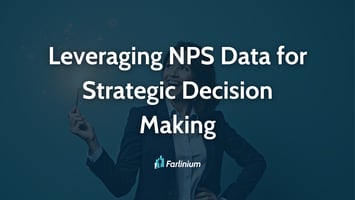Unlock NPS power with a 5-part series on transforming feedback into insights for better CX strategy!
Closing the Loop – Designing the Inner and Outer Loops
Gathering feedback is just the first step in enhancing customer interactions. The real value lies in responding to feedback and ensuring your customers feel heard and valued. This process, often called “closing the loop,” is crucial for turning insights into actions that drive continuous improvement. In this third installment of our NPS best practices series, we’ll explore how to design effective inner and outer loops that ensure accountability and follow-up at every level of your organization.
Understanding the Inner and Outer Loops
Before diving into the design strategies, it’s essential to understand what we mean by the inner and outer loops in the context of NPS.
- Inner Loop: This involves the immediate, individual follow-up with customers who have provided feedback. The inner loop aims to quickly address any issues or concerns raised by respondents, particularly detractors, to improve their experience and prevent churn.
- Outer Loop: The outer loop, on the other hand, focuses on identifying and addressing broader, systemic issues that affect multiple customers. This loop involves analyzing feedback trends to make strategic changes at an organizational level, ensuring that common pain points are resolved for the long term.
Designing an Effective Inner Loop
The inner loop focuses on efficiency and personalization. Below are several approaches to achieve this:
- Prioritize Detractors: Your top priority should be detractors or customers who rate your business 0-6 on the NPS scale. Follow up with them as quickly as possible to understand their concerns and work towards a resolution. The faster you respond, the more likely you are to turn a negative experience into a positive one. Leveraging the Qualtrics Ticketing system is a great way to increase response times.
- Empower Frontline Teams: Ensure that the teams handling customer feedback have the authority and resources to resolve issues on the spot. This empowerment reduces the time it takes to address concerns and increases the chances of a satisfactory outcome for the customer.
- Personalize Your Approach: Use the feedback provided to tailor your follow-up communication. Acknowledge the specific issues raised by the customer and offer a clear action plan. Personalization shows that you’re not just ticking a box but genuinely care about the customer’s experience.
- Track and Document Interactions: Keeping a record of all follow-up actions is crucial. This documentation helps you track the effectiveness of your inner loop process with KPIs such as resolved issues, time to resolution and satisfaction. This will provide valuable insights for the outer loop.
Designing an Effective Outer Loop
The outer loop requires a more strategic approach, dealing with issues impacting a broader customer base segment. Here are the key areas we focus on for outer loops:
- Analyze Feedback Trends: Regularly analyze customer feedback, not just detractors. Look for patterns or recurring issues that indicate a systemic problem. This analysis will help you identify areas that need improvement on a larger scale.
- Collaborate Across Departments: The outer loop often involves multiple departments within your organization. Whether it’s product development, customer service, or marketing, ensure that all relevant teams are engaged in analyzing feedback and implementing changes.
- Prioritize Strategic Changes: Not all feedback will lead to immediate action. Prioritize changes that align with your business goals and have the potential to improve the customer experience significantly.
- Communicate Back to Customers: After making changes based on customer feedback, it is essential to close the loop by communicating these changes back to your customers. Let them know that their feedback was heard and acted upon. This transparency builds trust and shows customers that their input truly matters.
Ensuring Accountability and Continuous Improvement
Accountability is critical for both the inner and outer loops to be effective. Here are some strategies to ensure that your organization remains committed to closing the loop:
- Set Clear Ownership: Assign inner and outer loop ownership to specific teams or individuals. This clarity ensures that someone is responsible for following up on customer feedback and driving improvements.
- Measure and Report on Progress: Regularly measure the effectiveness of your inner and outer loop processes. Track metrics such as response times, resolution rates, and customer satisfaction scores. Reporting on these metrics keeps everyone in the loop and focused on continuous improvement.
- Iterate and Improve: Closing the loop is not a one-time effort. Continuously seek ways to improve your processes based on the outcomes you achieve. Whether it’s refining how you analyze feedback or improving follow-up communications, always look for opportunities to enhance your approach.
Conclusion
Designing efficient inner and outer feedback loops helps optimize your NPS data. By transforming customer feedback into actionable insights, you can enhance loyalty and satisfaction. Focus on prompt, personalized responses to detractors while also addressing larger, systemic issues.
In the next part of our series, we’ll explore leveraging NPS data for strategic decision-making, helping you align your business goals with customer needs and drive growth. Stay tuned!



